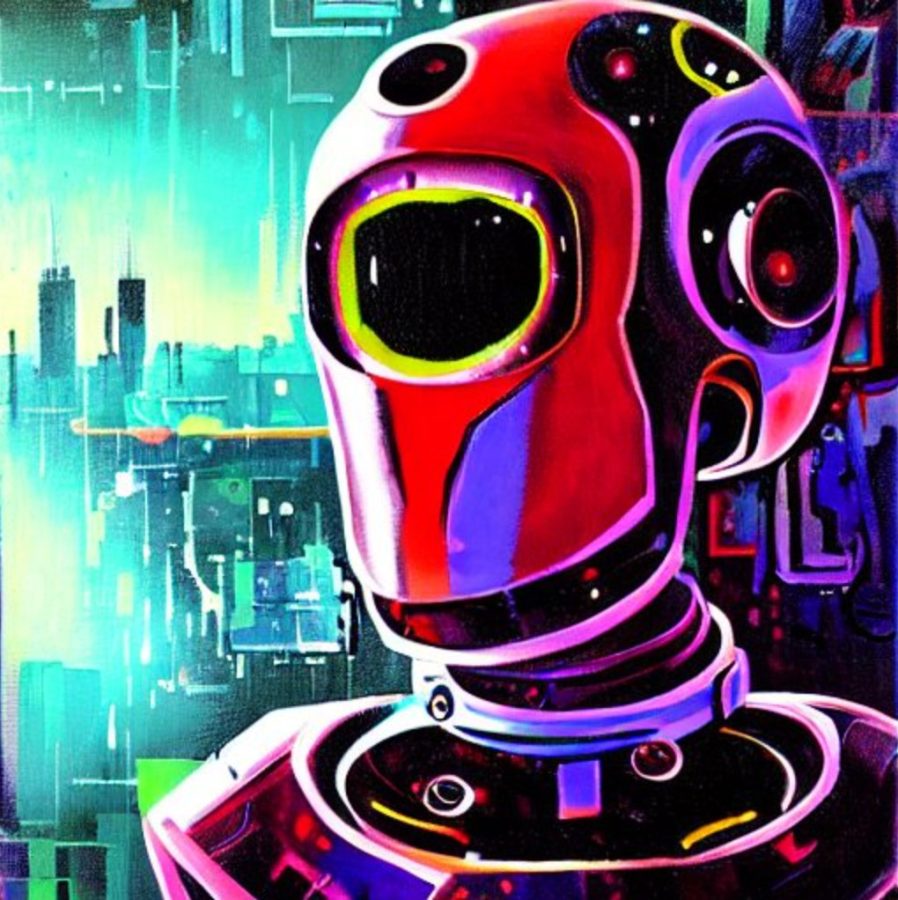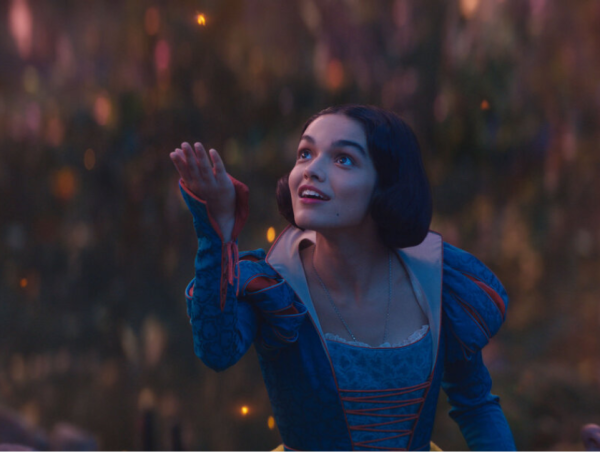AI Art: The AI Takeover of the Arts Industry
“Cyberpunk robot image” generated by Stable Diffusion, an AI art generator.
The emergence of AI art as a rapidly growing field has the potential to revolutionize the way we create and consume art. However, this advancement in technology comes with a number of concerns, especially in the arts community, as artists’ livelihoods are threatened as the line between art made by humans and art made by AI becomes blurred.
One of the biggest concerns is the potential for plagiarization. Typically, most AI programs generate these art pieces by using a database of artworks to base their own art upon, and many of these databases—like the one Stable Diffusion uses—have artwork collected in them without the consent of the artist, which can be seen through the generated images when typing an artist’s name into the prompt. While simply taking inspiration from a variety of sources is not an issue, a user can simply type in the name of an artist as a prompt and get a piece of artwork that is an imitation of that artist’s work, plagiarizing the artist’s style. Even more concerning is how individuals can create a program and, rather than utilize a database, choose to train an AI specifically on an artist’s style by just feeding the AI pieces of art made by the artist they would like to imitate.
While some argue that AI art cannot surpass human creativity and, therefore, does not pose a substantial threat to artists’ livelihoods, this argument fails to realize that customers are not always looking for a highly creative piece. For example, clients for smaller jobs like logo designs and social media ads may simply want something simple and cheap. In normal circumstances, they may commission a smaller artist to get the job done, but with the new appearance of AI, they could choose to get their product automated instead, saving them money.
Similarly, as AI continues to develop, it opens questions on AI’s role in art competitions and whether or not it should be considered cheating. AI art can—and is—submitted for competitions and even wins because oftentimes it can be indistinguishable from art made by humans. It can be argued that AI is still a legitimate way of art, as it requires meticulous prompt writing and possibly later adjustments to a piece generated, but is it truly fair considering the number of hours and amount of creative thinking a human artist would need to spend brainstorming a piece of art, creating the piece, making adjustments, and more? It can also be insisted that AI can be merely used for inspiration, or as a step in the process to create the final product, but the question becomes: how much AI is okay? Even if lines are drawn for the amount of AI allowed in art competitions, how would one be able to tell the level of AI involvement in an artwork?
AI art cannot surpass human creativity. Yet. Considering the great advancements it has made in the past years, the possibility of it surpassing humans is not out of the equation. With easy access to an infinite number of art sources, and the ability to process more artwork than a human can process in their lifetime, exceeding humans seems more likely than ever.
The increase of AI involvement is inevitable in the world, just like how technology and smart devices have taken over. But as the movement grows, it is vital that its potential threat to the arts industry and artists is addressed. Just as it can potentially be used for good, it also holds a great, if not greater, likelihood of being used maliciously, facilitating plagiarism and the unfair robbing of jobs. Can AI art coexist on par with human art, or is it a threat that will consume the traditional art community?







